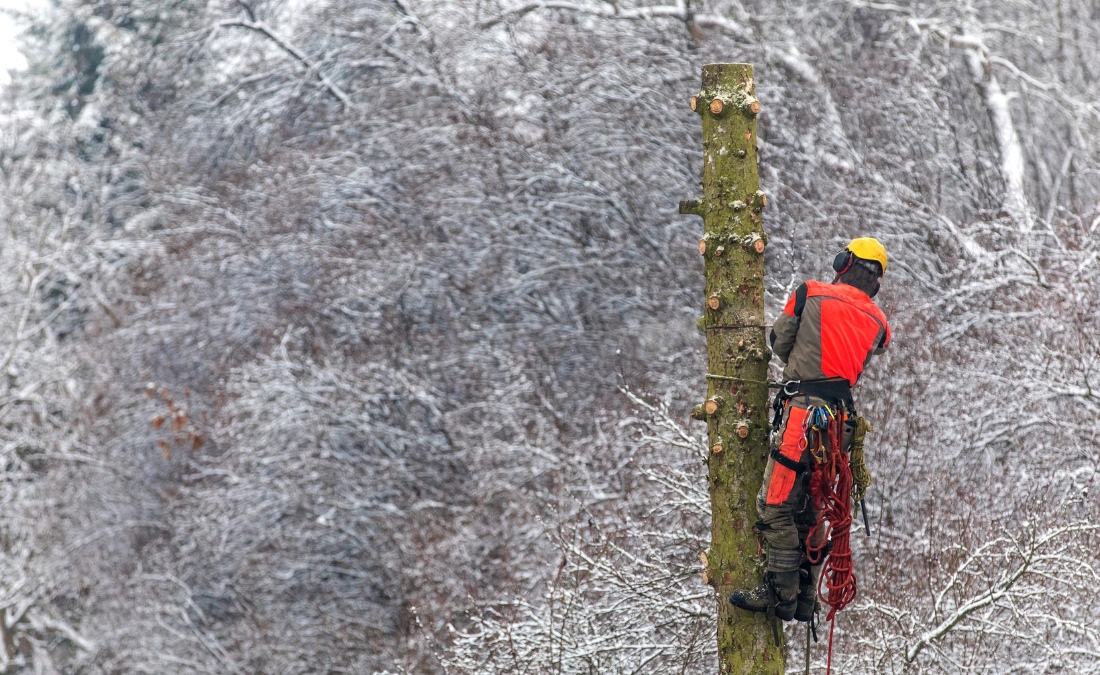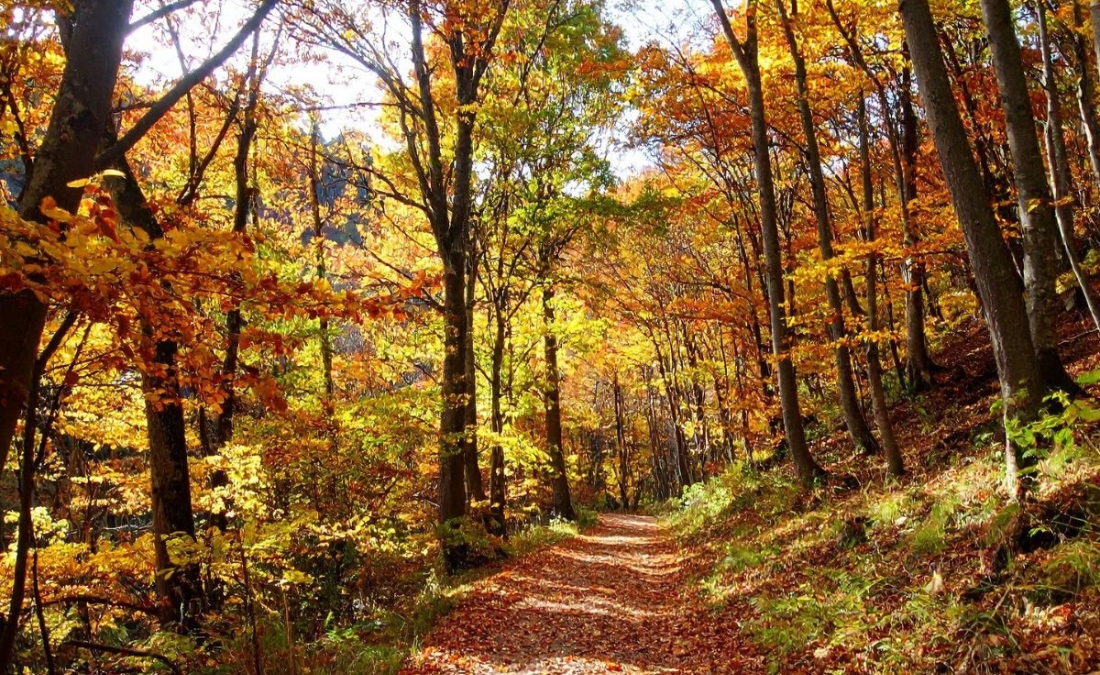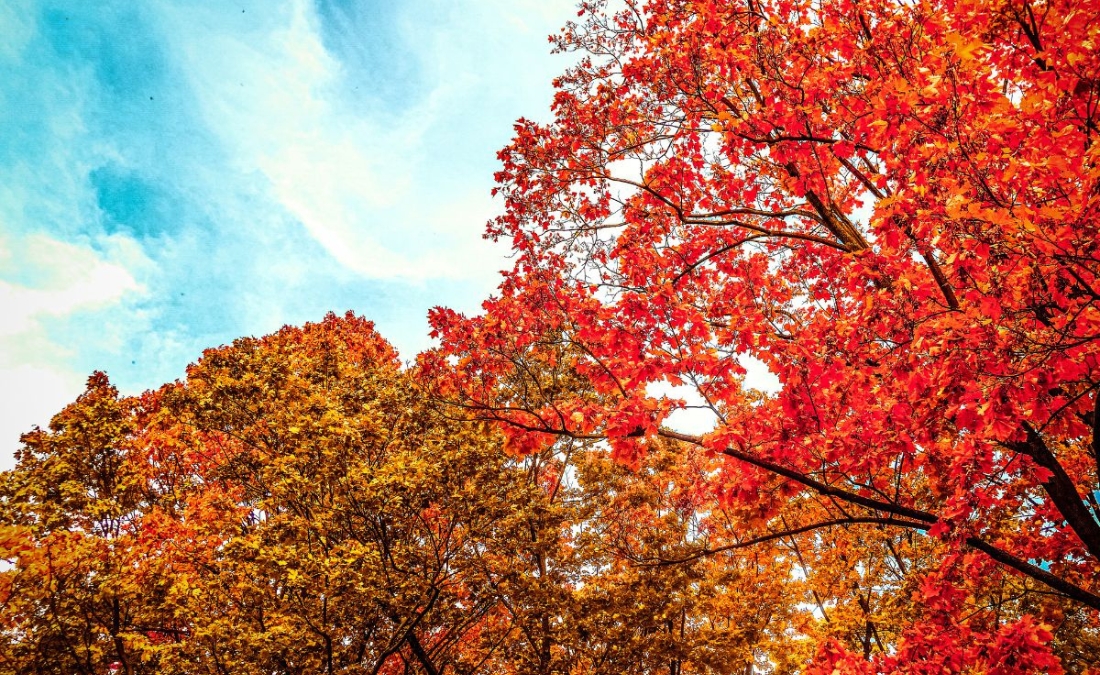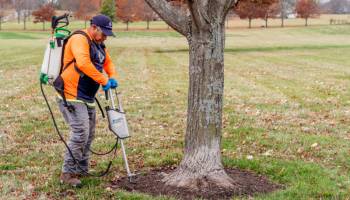How to Protect Young Trees from Storm Damage in Cedar Rapids
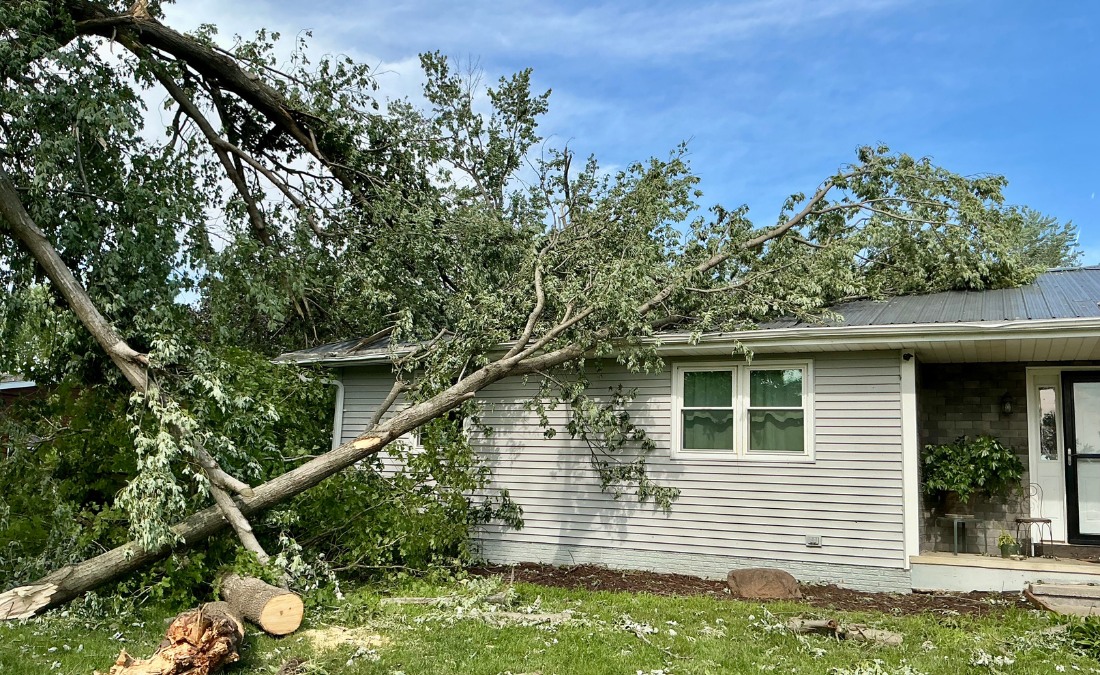
Worried your new sapling won’t survive Cedar Rapids’ summer storms? Learn how to protect young trees from storm damage with these expert tips and strategies.
As July temperatures climb and afternoon thunderheads build on the western horizon, Cedar Rapids homeowners face a familiar summer dilemma: will tonight’s storm be just another passing shower, or will it be the one that snaps your newly planted oak in half? Learning how to protect young trees from storm damage is essential – especially in continuing the efforts of the ReLeaf Cedar Rapids initiative.
While storms can impact even the sturdiest tree, young trees are especially vulnerable to weather-related damage. Fortunately, protecting your saplings doesn’t have to mean constant worry. With the right care, you can ride out this storm season and savor the last stretch of summer.
Key Takeaways
- Young trees are most vulnerable during their first 3-5 years due to shallow root systems and flexible trunks that haven’t yet developed the structural strength to withstand high winds.
- Proper staking dramatically reduces wind damage when installed and removed correctly – working to protect your investment without weakening your tree’s natural development.
- Strategic watering and mulching create stronger root systems that anchor trees more effectively during storms, while also reducing drought stress that makes trees vulnerable to breaking.
- Light structural pruning removes weak spots before storms cause damage – but if done wrong, it can do more harm than good, so a professional assessment is essential.
Why Young Trees Are Particularly Vulnerable to Summer Storms in Cedar Rapids
Newly planted saplings face unique risks during the Midwest’s intense summer storms – especially with weather experts noticing a shift in “Tornado Alley” that includes more of the state. Here’s why young trees are far more prone to storm damage in their first three to five years than their mature counterparts:
- Shallow or Underdeveloped Root Systems: Young trees typically have root balls that only extend 12-18 inches from the trunk – far less than the wide-reaching root networks of mature trees. This limited anchorage offers little resistance against strong winds.
- Underdeveloped Structural Strength: While mature trees have thickened over decades, gradually strengthening their wood fibers to better respond to wind, saplings haven’t yet developed this natural reinforcement. Instead, their flexible trunks can bend excessively in high winds, creating a “whipping” effect that may snap or even uproot the tree.
- Nursery-Grown Conditions: Many young trees come from largely controlled environments where they’ve been shielded from stress and varied conditions. This can delay their ability to respond naturally to outdoor forces like wind or rain.
Storm Protection Strategies for Young Trees
When it comes to protecting young trees from storm damage, a little preventive maintenance and care can go a long way. The following techniques help to establish optimal growing conditions, so your new tree is prepared for everything from typical summer thunderstorms to more severe wind events.
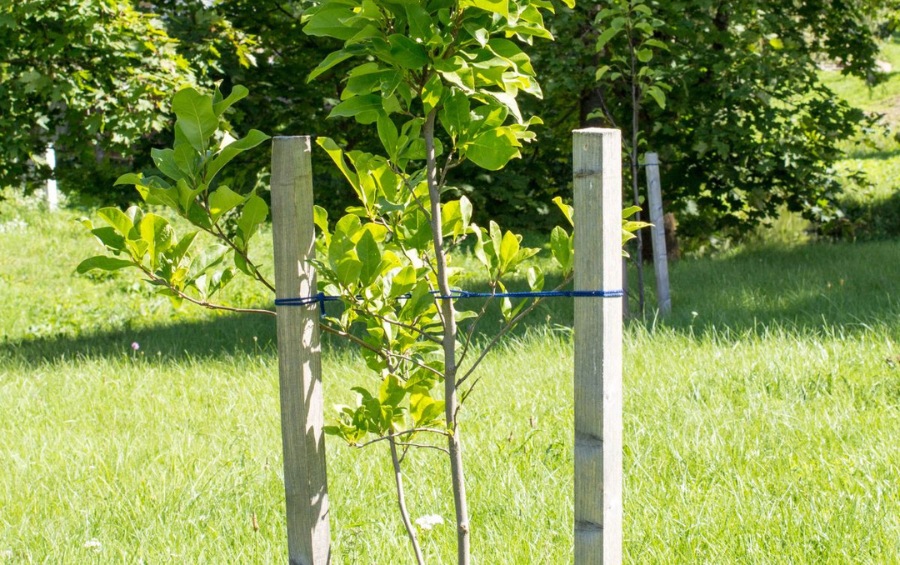
Stake Young Trees the Right Way
Tree staking gets a bad reputation because it is often done incorrectly, but proper staking can greatly reduce wind damage. The key is knowing when to stake, how to stake, and – more importantly – when to remove them.
When to Stake:
- Trees with small root balls relative to their height
- Trees planted in windy locations
- Trees that show any movement when you push gently on the trunk
How to Stake:
Here in the greater Cedar Rapids area, most young trees can benefit from the two-stake method to maximize wind resistance and trunk support:
- Place stakes 18-24 inches from the trunk, positioning them perpendicular to prevailing winds (typically southwest to northeast in our area)
- Use broad, flexible ties – never wire or rope that can cut into bark – to secure the stakes to the tree trunk
The goal is that the young tree can move slightly in light winds while being held tighter and more secure during stronger gusts.
When to Remove Stakes:
Most young trees can have their stakes removed after one growing season, but those that are larger and require support a bit longer may need to keep them for another growing season.
However, you should never keep your tree staked for longer than two seasons max. Stakes that are left too long can actually weaken trees by preventing natural trunk strengthening.
Mulch for Root Strength and Storm Stability
Proper mulching does double duty: it helps establish the strong root system needed to anchor trees during storms while also protecting against drought stress that weakens trees’ storm resistance.
Apply a three-to-four-inch layer of organic mulch in a circle extending at least to the tree’s drip line and avoid “volcano mulching.” Keeping mulch at least three to six inches away from the tree’s trunk rather than piling it against it helps prevent moisture and pest problems.
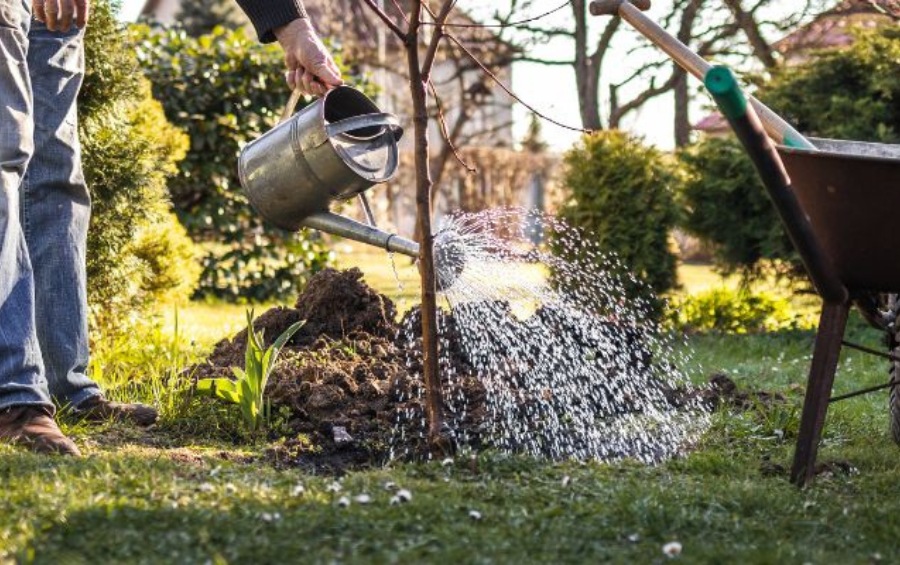
Water for Wind Resistance Flexibility
Counterintuitive as it seems, proper watering is one of the most effective ways to protect young trees from storm damage. Well-hydrated trees develop faster, stronger root systems and maintain the flexibility needed to bend rather than break during thunderstorms and other high wind events.
A couple tips for watering young trees we suggest include:
- Water Deeply and Infrequently: This practice encourages roots to grow down into the soil rather than spreading shallowly. Newly planted trees need approximately 15-20 gallons per week during their first growing season – about the equivalent of one to two inches of rainfall. Water the base of the tree slowly and in several sessions, giving the moisture time to soak in deeply instead of simply running off.
- Hydrate Before the Storm: Watering your tree ahead of an oncoming storm can actually help it sustain severe weather better. A well-hydrated tree maintains better structural integrity and is less likely to become brittle.
- Test the Soil Regularly: To determine when your tree needs a drink, you can monitor the soil moisture by inserting a soil probe or screwdriver roughly six to eight inches into the ground near the tree. If it’s difficult to push in, or if the soil feels dry at that depth, it’s time to water.
Prune Early to Prevent Breakage
Young trees often benefit from light structural pruning to eliminate weak points before storms find them. Remove any branches with narrow, V-shaped crotches, as these create natural failure points during high winds. Also eliminate any co-dominant leaders (multiple main trunks) by selecting the strongest, most central stem and removing competing limbs.
When it comes to pruning – especially for young trees – less is more. Remove only obviously problematic branches and let the tree develop its natural form. Over-pruning actually weakens trees and makes them more susceptible to wind damage. And always consult a team of professionals before taking gardening shears to your young tree; it’ll save your tree and your wallet.
Frequently Asked Questions About Protecting Young Trees from Storm Damage
How long should I keep stakes on my young trees?
Remove stakes after one growing season for most trees, two seasons maximum. However, have a professional assess your specific trees, as improper stake removal timing can compromise tree health and storm resistance.
When should I prune my young trees for storm resilience?
Late winter or early spring (February through April) is ideal for protective pruning in Cedar Rapids. This timing allows cuts to heal before storm season while avoiding the active growing period when trees are most vulnerable to stress.
How do I know if my young tree survived a storm without visible damage?
Look for subtle signs like:
- Slight leaning
- Cracks in the soil around the base
- Looseness when you gently push the trunk
Scratch a small area of bark with your fingernail – healthy tissue underneath should be green and moist. Brown or dry tissue indicates damage. Also watch for delayed leaf drop, wilting, or stunted growth in the weeks following a storm, as these can signal root damage.
Are certain tree species better for Cedar Rapids’ storm-prone climate?
Yes, some species handle wind better than others. Bur oak, honey locust, and hackberry are excellent choices for storm resilience, while still thriving in Iowa’s climate. When selecting trees, prioritize those with strong wood characteristics and deep root systems over fast-growing varieties that may not withstand severe weather.
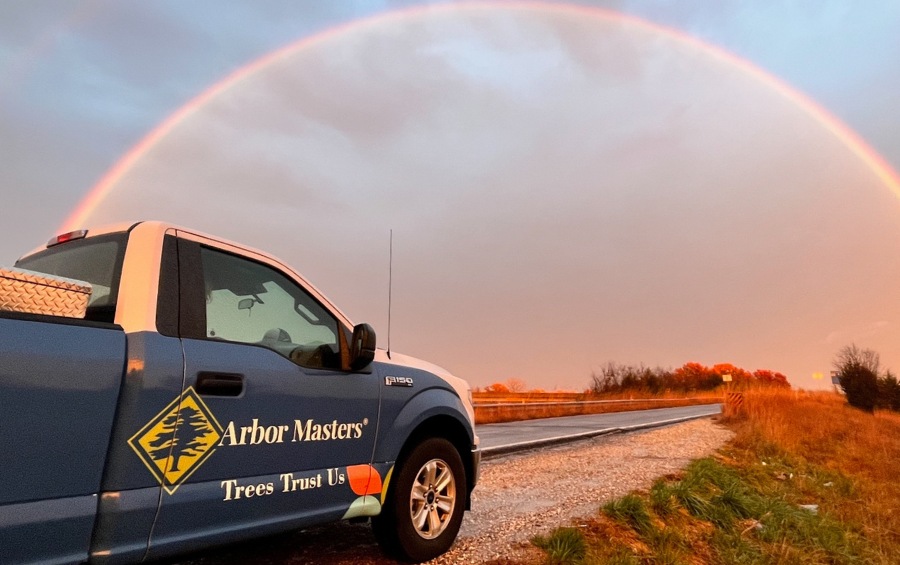
When Storms Strike, Protect Your Young Trees with Help from Arbor Masters
Don’t wait for the next severe thunderstorm warning to discover your young trees aren’t properly protected. A professional assessment costs far less than replacing storm-damaged trees – and provides invaluable peace of mind during every weather alert.
Our team of Certified Arborists will assess your landscape and help you create a plan to protect young trees from storm damage this summer. To ensure your property is as prepared as possible, contact Arbor Masters today at 319-359-6135.

Get the latest local news, tree care tips, special offers, and company updates directly to your inbox! It's easy to subscribe and there's no spam - we promise.
"*" indicates required fields


